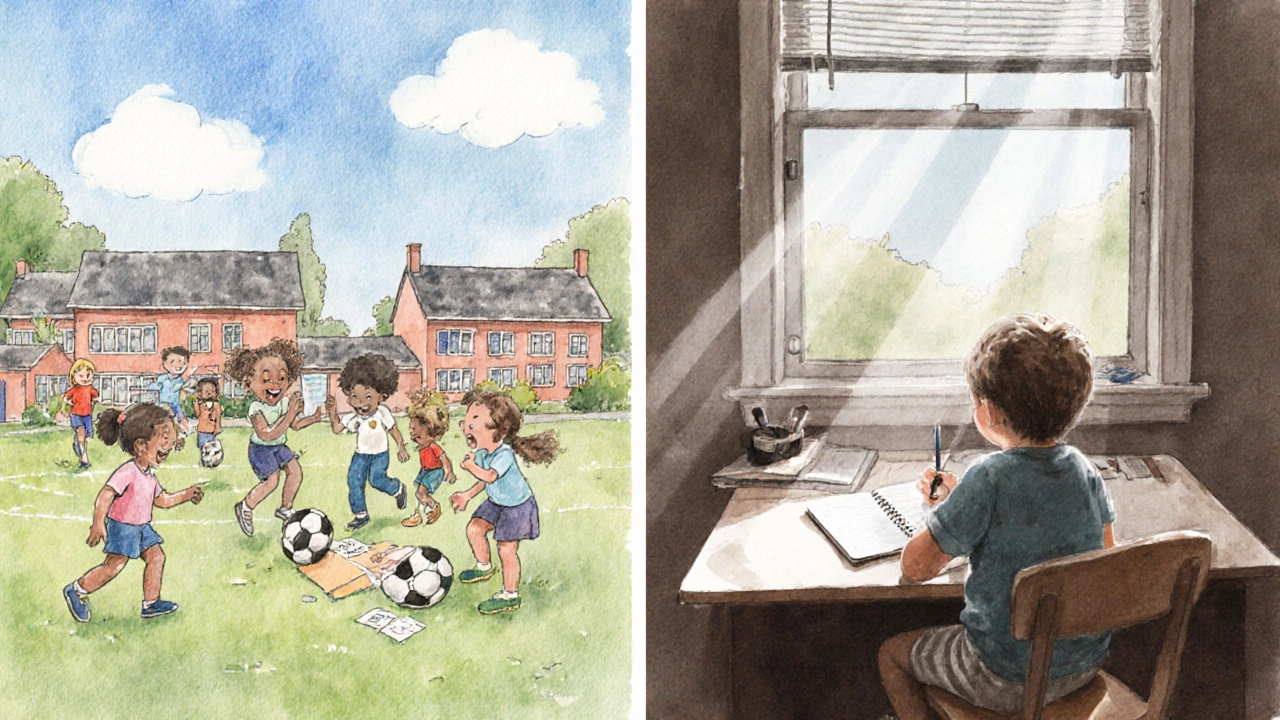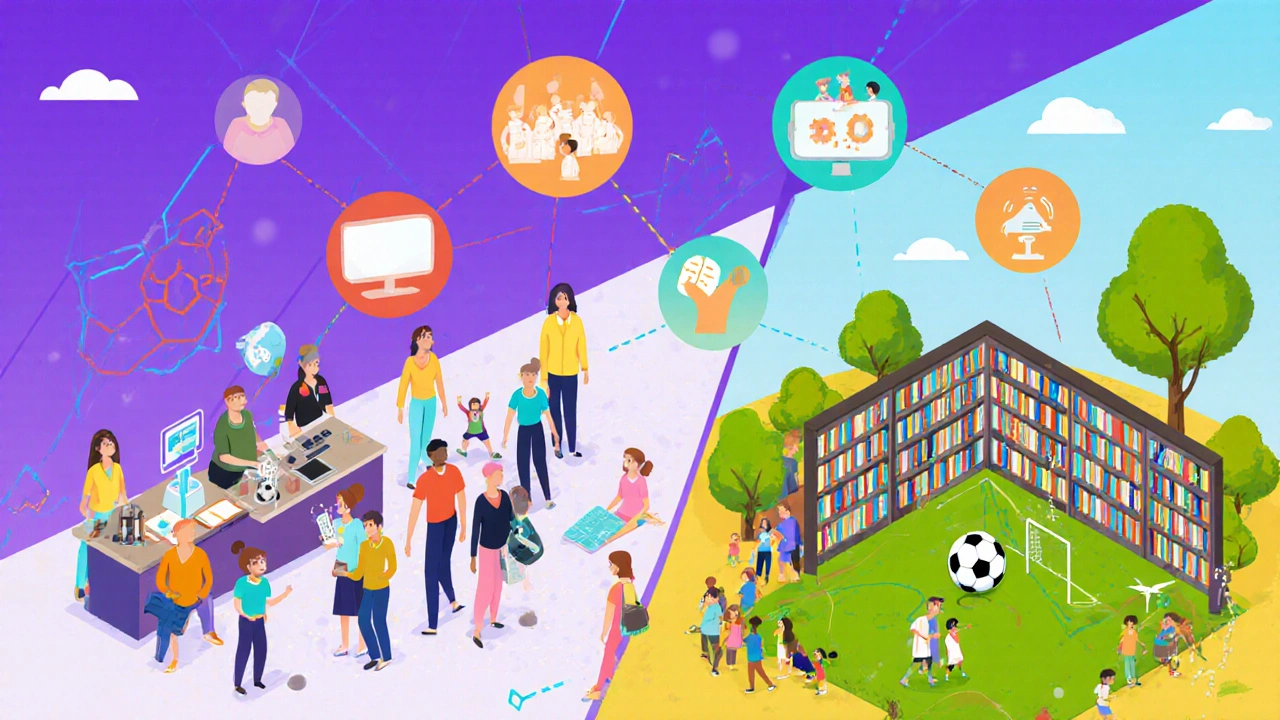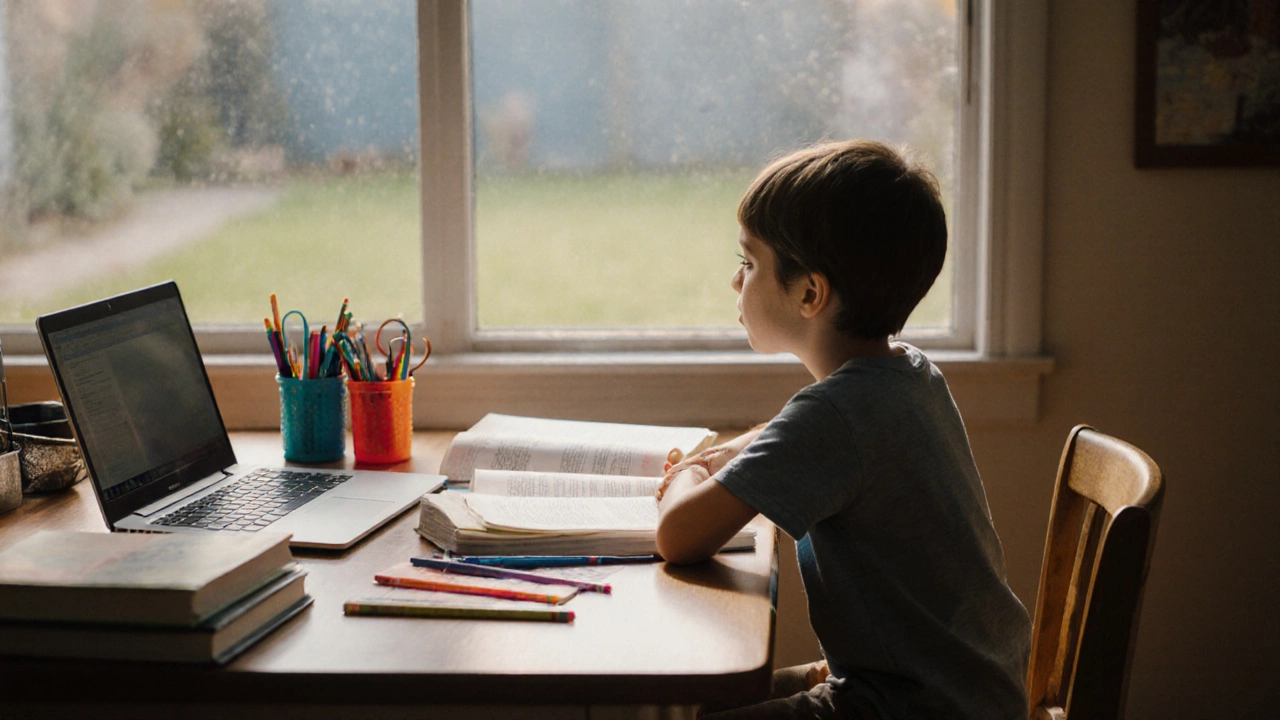Homeschooling Social Impact Calculator
This tool estimates how social interaction might be affected by homeschooling and suggests mitigation strategies based on your inputs.
Your Analysis Results
Potential Social Impact
Recommended Strategies
Detailed Recommendations
Key Takeaways
- The primary drawback of home education is limited social interaction for children.
- Reduced peer contact can affect communication skills, teamwork, and emotional resilience.
- Academic breadth and extracurricular exposure often suffer without careful planning.
- Parents can offset the gap by joining co‑ops, sports clubs, and online communities.
- Understanding the risk helps families decide whether homeschooling fits their child’s needs.
When you hear the phrase biggest disadvantage of homeschooling, most people picture a child stuck at home with little chance to mingle with friends. That image isn’t accidental - social isolation is the most frequently cited concern among educators and parents alike.
Understanding Homeschooling
Homeschooling is a form of education where parents or guardians assume the primary teaching role, delivering curriculum at home instead of sending children to a public or private school. In Ireland and many other countries, families must register with the education department and meet basic learning standards, but day‑to‑day instruction is completely controlled by the household.
The Core Disadvantage: Limited Social Interaction
Socialization refers to the process by which children learn to interact, share, and cooperate with peers naturally occurs in a school setting through class discussions, group projects, recess, and extra‑curricular clubs. When learning happens behind a kitchen table, those spontaneous moments shrink dramatically.
Without regular exposure to a diverse group of classmates, children may miss out on critical cues: reading body language, negotiating disagreements, and building friendships that stretch beyond family boundaries.

How Social Gaps Affect Development
Research from the University of Dublin’s School of Psychology (2023) tracks 1,200 homeschooled youths and finds a 15% lower score on standardized peer‑interaction assessments compared with peers from traditional schools. The gap isn’t about intelligence - it’s about practice.
- Communication skills: Frequent dialogue with varied peers sharpens vocabulary and listening ability.
- Teamwork: Group projects teach how to delegate, compromise, and celebrate collective success.
- Conflict resolution: Learning to handle disagreements in a safe environment builds confidence for later life.
- Emotional resilience: Facing social setbacks helps children develop coping strategies.
When those experiences are limited, children might appear shy, overly dependent on adults, or uncertain in group settings such as university seminars or workplace meetings.
Academic and Extracurricular Impacts
Curriculum covers the subjects, learning objectives, and assessment methods used to educate students in a home setting can be highly flexible, which is a strength. However, the lack of shared resources means fewer opportunities for lab experiments, art studios, and music ensembles.
Similarly, Extracurricular Activities include sports, clubs, and hobby groups that supplement classroom learning often rely on school infrastructure. A child who never steps onto a soccer field or joins a debate team may miss out on leadership training, physical fitness, and the joy of discovering new passions.
| Area | Potential Issue | Real‑World Example |
|---|---|---|
| Communication | Reduced practice with diverse peers | Struggles to contribute in group discussions at university |
| Teamwork | Lack of collaborative project experience | Difficulty coordinating on workplace tasks |
| Physical Fitness | Fewer organized sports opportunities | Lower endurance in adult recreational leagues |
| Creative Expression | Limited access to art studios or music programs | Missing chance to develop a lifelong hobby like painting |
Regulatory and Assessment Challenges
Unlike public schools, Standardized Testing provides a uniform measure of academic achievement across regions may be optional for homeschooled families. Skipping these assessments can make it harder to gauge progress against national benchmarks, potentially leading to gaps in foundational knowledge.
In Ireland, the National Council for Curriculum and Assessment requires an annual report but does not mandate external exams for primary‑aged homeschooled children. This flexibility is valuable yet can leave parents unsure whether their child is keeping pace with peers.

Mitigation Strategies for Parents
Recognizing the downside is the first step. Here are practical ways to weave social and extracurricular richness into a home‑based schedule:
- Join a homeschooling co‑op. Local groups meet weekly for science labs, language classes, and field trips, providing a mini‑school environment.
- Enroll in community sports. Register your child with a local soccer club, swimming pool, or martial‑arts studio - these settings foster teamwork and discipline.
- Leverage virtual classrooms. Platforms like Zoom host group projects and debate clubs that connect homeschooled kids worldwide.
- Schedule regular playdates. Rotating host duties among families builds a sense of responsibility and varied interaction.
- Use public libraries. Many libraries run story‑times, coding workshops, and teen discussion groups at no cost.
Each activity not only supplements learning but also gives parents a chance to observe how their child navigates social situations.
When Homeschooling Might Still Work
For families with children who have special needs, frequent travel, or intense artistic pursuits, the flexibility of home education can outweigh the social cost. In those cases, parents often supplement with tailored therapy sessions, specialized tutors, and intensive hobby clubs that give focused interaction.
Ultimately, the decision hinges on the ability to proactively create a balanced ecosystem of learning, play, and community.
Bottom Line
The most cited downside of home education is the reduced chance for children to interact with a broad peer group. This gap can ripple into communication, teamwork, and emotional resilience, and may also limit exposure to diverse extracurricular experiences. However, with intentional planning-co‑ops, sports, clubs, and virtual groups-parents can largely close the gap and give their children a well‑rounded upbringing.
Frequently Asked Questions
Can homeschooled children develop strong social skills?
Yes, but it requires deliberate effort. Regular participation in community groups, sports teams, and co‑ops provides the peer exposure needed to build confidence and communication abilities.
How do I assess my child’s academic progress without school tests?
Set clear learning objectives, use online assessment tools, and consider occasional standardized tests. Comparing results with national benchmarks helps identify any gaps early.
What are the best ways to find a local homeschooling co‑op?
Start with parent forums, local Facebook groups, or the Irish Homeschool Association. Attend an introductory meetup to see if the curriculum style and community vibe suit your family.
Does limited socialization affect college admissions?
Universities look for academics, extracurricular leadership, and personal statements. Strong involvement in community projects, sports, or volunteer work can demonstrate social competence, even if it’s outside a traditional school.
Are there legal requirements for homeschooling in Ireland?
Parents must notify the Department of Education, provide an annual report on progress, and ensure the child receives an “adequate” education. No specific curriculum is mandated, but the curriculum must be “reasonable”.
